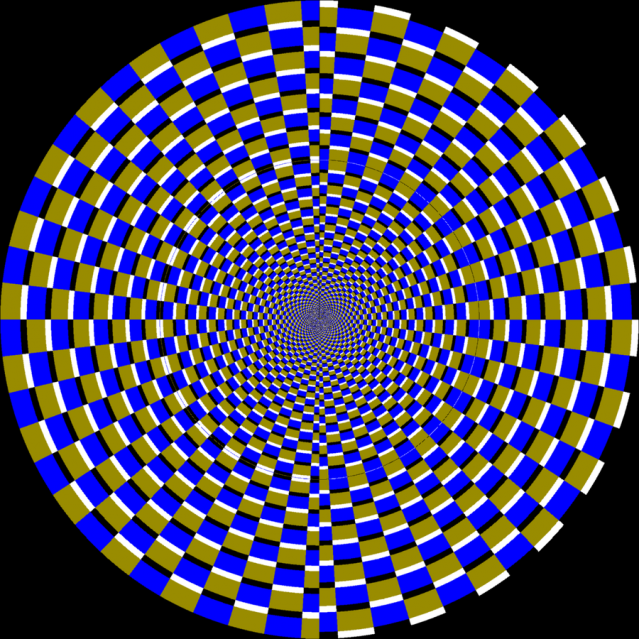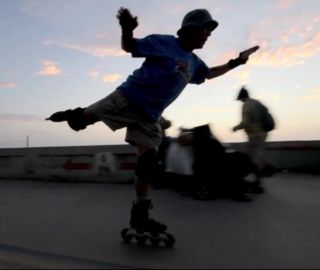Neuroscience
Slomo and the Neuroscience of Being in "The Zone"
John Kitchin shares the neuroscience of how-to get in "the zone" and stay there.
Posted April 19, 2014

Last weekend I stumbled on a short film by Josh Izenberg called “Slomo” which was recently featured in The New York Times. The film is about a neurologist named John Kitchin who quit his job 15 years ago in order to lead a more spiritual and less materialistic existence. John Kitchin spends his days and nights rollerblading along San Diego's Pacific Beach boardwalk and has mastered the neuroscience and art of getting in “the zone" and staying there.
As an ultra-endurance triathlete, watching John Kitchin skate—and hearing him describe the neuroscience of being in the zone—resonates with my own personal experiences of being in the zone. I also refer to the "zone" as "flow" and "superfluidity." In our conversation, John was quick to point out that these are all words describing the same thing, which I agree with. While watching the film, I kept nodding my head and saying out loud, “Yes, Yes. That’s it!” Have you experienced being in the zone? How would you describe it?
This short film blew my mind on so many levels. Have you seen it yet? Immediately after I finished watching the movie I reached out to Josh Izenberg. I wanted to speak with Josh more about the ideas in his movie and get in touch with Dr. John Kitchin aka “Slomo."
Josh was kind enough to connect me with John Kitchin who graciously agreed to speak with me on the telephone for what ended up being almost a two hour conversation. John Kitchin and I connected instantaneously. Within moments on the phone, I realized that we had both spent so much time in the zone that we could almost finish each other's sentences. It was probably the most inspiring conversation about every aspect of being in “the zone” that I’ve ever experienced. Thank you John! And thank you Josh Izenberg.
When John skates he tries to regress back to the innocence of a child around 11-years-old. In my book, The Athlete’s Way, I have a quote from Leonard Cohen who said, “Seven to eleven is a huge chunk of life, full of dulling and forgetting. It is fabled that we slowly lose the gift of speech with animals, that birds no longer visit our windowsills to converse. As our eyes grow accustomed to sight they armor themselves against wonder.” Hearing John describe going back to being eleven and a half reminds me of the sense of wonder we often lose during adolescence but can regain by going back into the zone.
Slomo's Mantra: "Do What You Want To"
One thing that John made clear to me within moments of beginning our conversation is that throughout history people have used different language to describe the universal experience of being in the zone. For example, when I described the feeling as going through a “pinhole” or a “portal” he laughed and said that he describes it as a “gate.” He also talks about how his visual field allows him to create a tunnel in which he skates towards a light in the center without having to focus on the peripheral.

Throughout our conversation, John spoke a lot about religion and the fact that most religions are ultimately saying the same thing. John Kitchin believes that when Jesus spoke of a camel trying to go through the eye of a needle he was also talking about going into the zone through a "pinhole", "portal", "gateway"... John referenced Matthew 19:24, “And Jesus said to His disciples, 'Truly I say to you, it is hard for a rich man to enter the kingdom of heaven.' Again I say to you, it is easier for a camel to go through the eye of a needle, than for a rich man to enter the kingdom of God.”
John reminds me of my own father who was a neurosurgeon and neuroscientist and published a book called The Fabric of Mind. My dad retired from his career abruptly and completely reinvented himself by living a simple life by the beach, writing, and traveling the country in a small RV. John and my dad arrived at so many of the same conclusions about spirituality and the neuroscience of higher states of consciousness that it is bizarre.

Slomo connects to the center of the earth.
John describes an expansive state of consciousness that is created when the vestibular reflexes of the inner ear connect a person to the center of the earth during moments of acceleration. He believes this is the key to being in the zone.
This was music to my ears because my father had an obsession with the “vestibulo-ocular reflex” (VOR) and the cerebellum being the key to having an “eye for the ball” and creating a state of flow in sports. If you’d like to read more about the vestibular system and cerebellum check out links to my other Psychology Today blog posts at the end of this post.
John described to me in detail how he stays in the zone by focusing on balancing the "pebbles" of his inner ear and is able to skate in slow motion by directly controlling the vestibular reflex and his gravitational connection to the center of the earth as well as the forces of the sun and the moon. It might begin to sound a bit woo-woo or new-agey... but John always brings it back to neuroscience.
When John speaks of connecting to the center of the earth it reminds me of a visualization that I have done as an ultrarunner that allows me to feel like a conduit of energy held in the core of the earth. While competing in races like Badwater—where I ran 135 miles through Death Valley in July—the bottoms of my feet felt like they were burning up from blisters and heat.
Whenever my feet would get blisters during an ultramarathon, instead of stepping lightly, I would pound my feet into the ground harder and visualize the jolt of pain entering my body through the soles of my feet was energy coming from the core of the earth. My feet became a conduit that allowed my body to tap into an infinite energy source that propelled me forward like I was plugged into a nuclear reactor. I used the same visualization to break a Guinness World Record running 153.76 miles on a treadmill in 24 hours.
Conclusion: With Hopes in Their Hearts and Wings on Their Heels

Slomo skating in "the zone."
Like everybody who has experienced the zone, John and I both describe a transcendent and ecstatic sense of connection to something divine through a combination of music and acceleration. Like John, when I am listening to music and moving my body forward through space I feel like I am flying. This is a universal experience that is accesible to anyone who goes into the zone.
John referred to the movie Chariots of Fire a few times during our conversation. Of course, this film was a huge inspiration for me as a young runner. John described a scene where someone in the crowd says “Did you see that?!" after witnessing the magic of a runner who was tapped into the zone. John and I agree that "when you get there you'll know" that you are in the zone.
I've invited John Kitchin to do a guest blog for The Athlete's Way to share more of his insights on how-to get in the zone and stay in the zone with myself and other readers. Stay tuned!
If you’d like to read more on vestibular systems and being in the zone, check out my Psychology Today blog posts:
- "The Neuroscience of Making Eye Contact"
- "Superfluidity: Peak Performance Beyond a State of Flow"
- "Singularity of Focus Can Distort What We See"
- "I Want to Make You Want to Sweat"
- "The Neuroscience of Superfluidity"
- "Neuroscientists Discover How Practice Makes Perfect"
- "Our Unconscious Mind Catches Grammatical Errors"
- "How Does the Brain Create a "Continuity Field" of Vision"
- "Adding Movement to Mental Rehearsal Improves Performance"
- "Why Is Dancing So Good for Your Brain?"
Follow me on Twitter @ckbergland for updates on The Athlete’s Way blog posts.




